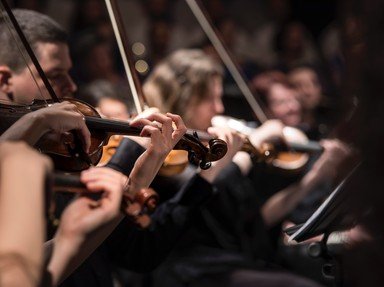Quiz Answer Key and Fun Facts
1. A fugue is a type of composition in which a number of different voices or parts play the same melody at different points in time. Which of these terms best describes fugal texture?
2. The theme or main melodic idea of a fugue is called the subject. Fugue subjects typically undergo various transformation over the course of the piece. What is NOT a generally recognized term for a method of altering the subject?
3. Fugues are most closely associated with which of these instruments or ensembles?
4. Which of these musical forms or genres most closely resembles a fugue in its style?
5. Which of these movement types did the Baroque master J.S. Bach NOT use to introduce any of his fugues?
6. Which of these is the correct title of J.S. Bach's 1748-1749 fugal masterpiece?
7. Czech-American composer Jaromír Weinberger (1896-1967) introduced the fugue from his opera "Schwanda the Bagpiper" with what type of dance movement?
8. Ludwig van Beethoven originally scored his "Grosse Fuge" ("Great Fugue") in B-flat, Op. 133, for what instrument or ensemble?
9. The word "fugue" has a nonmusical meaning as well. What is it?
10. Fugues written in minor keys sometimes arrive at a major chord in the final cadence. What is the technical term for this harmonic effect?
Source: Author
celicadriver
This quiz was reviewed by FunTrivia editor
kyleisalive before going online.
Any errors found in FunTrivia content are routinely corrected through our feedback system.

